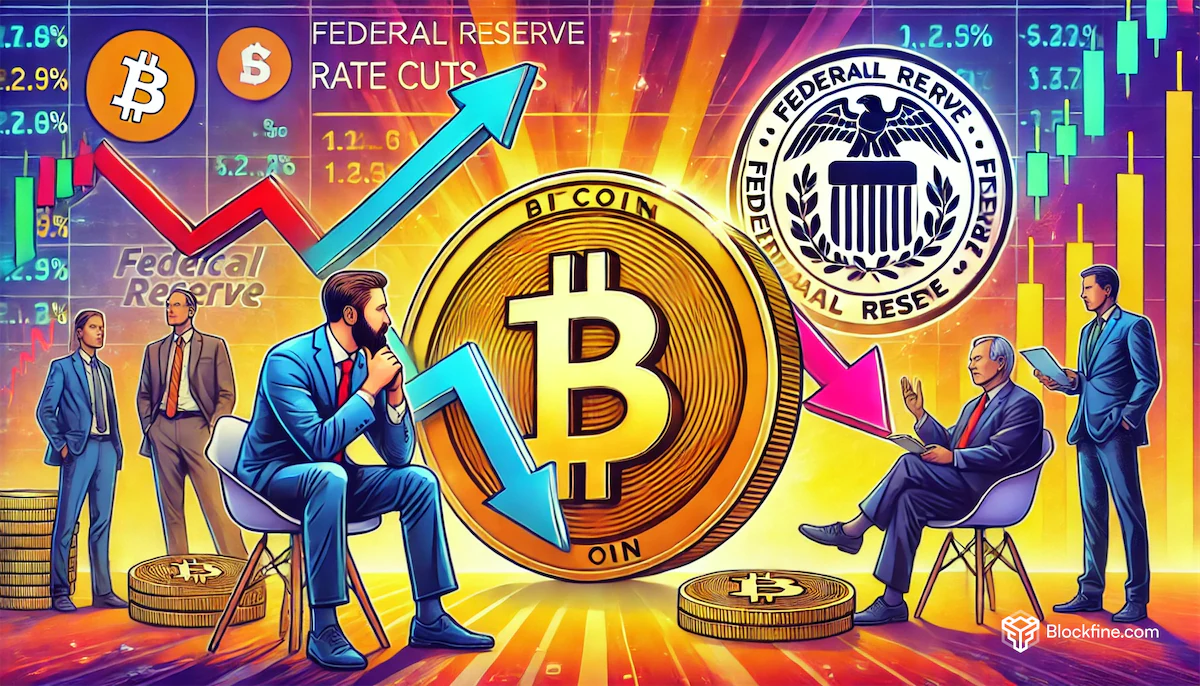Arthur Hayes, the co-founder and former CEO of BitMEX, recently shared his insights on why the Federal Reserve’s rate cuts are not providing the anticipated boost to Bitcoin’s price. Despite the common belief that lower interest rates should benefit risk-on assets like Bitcoin by increasing market liquidity, Hayes argues that the current economic environment presents a different picture.

Reverse Repurchase Agreements (RRPs) and Their Impact
One of the key factors Hayes points to is the significant role of reverse repurchase agreements (RRPs). These financial instruments involve the sale of securities with the agreement to repurchase them at a higher price at a future date. Currently, RRPs are offering a 5.3% interest rate, which is higher than the yields on U.S. Treasury bills, which are around 4.38%. This discrepancy has led large money market funds to shift their capital from Treasury bills to RRPs, effectively reducing the liquidity available for higher-risk assets like Bitcoin.
This movement of funds into RRPs acts as a form of “parking lot” for cash, as banks and money managers prefer these higher-yielding, low-risk investments over riskier assets. Consequently, instead of fueling a rally in Bitcoin, the anticipated liquidity boost from the Fed’s rate cuts is being absorbed by RRPs, keeping capital away from the broader market, including cryptocurrencies.
Misaligned Expectations of Rate Cuts
Hayes also highlights that the general assumption—that lower interest rates automatically lead to a weaker dollar and higher Bitcoin prices—is not playing out as expected. While a weaker dollar can make Bitcoin more attractive as a store of value, the flow of capital into RRPs suggests that the rate cuts are not having the intended effect on liquidity. Instead of encouraging spending and investment in riskier assets, the funds are being locked into safer investments, diminishing the impact on Bitcoin.
Moreover, Hayes notes that even though Bitcoin briefly spiked to $64,000 following the announcement of a likely rate cut by Fed Chair Jerome Powell, the price quickly dropped by 10% to $57,400. This volatility underscores the challenges Bitcoin faces in an environment where traditional financial instruments are offering competitive returns, making it harder for Bitcoin to sustain a rally solely based on rate cuts.
Broader Economic Context
Hayes’s analysis is set against a backdrop of broader economic uncertainty. He suggests that while the Fed may continue to cut rates and expand its balance sheet, the effects on Bitcoin may be limited unless there is a significant shift in how capital is allocated within the financial system. The central bank’s efforts to stimulate the economy could lead to a short-term “sugar high” for Bitcoin, but this boost is likely to be short-lived unless Bitcoin consolidates above critical levels, such as $70,000.
In conclusion, Arthur Hayes’s perspective offers a cautionary note to those who expect Federal Reserve rate cuts to drive a sustained Bitcoin rally. The interplay of RRPs, market liquidity, and investor behavior suggests that the relationship between interest rates and Bitcoin is more complex than it might initially appear. As the global financial landscape continues to evolve, Bitcoin’s path forward will likely depend on a broader set of economic factors beyond just interest rate policies.
